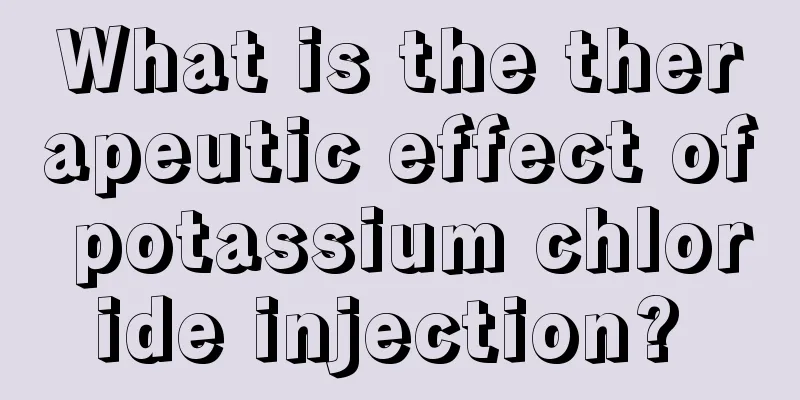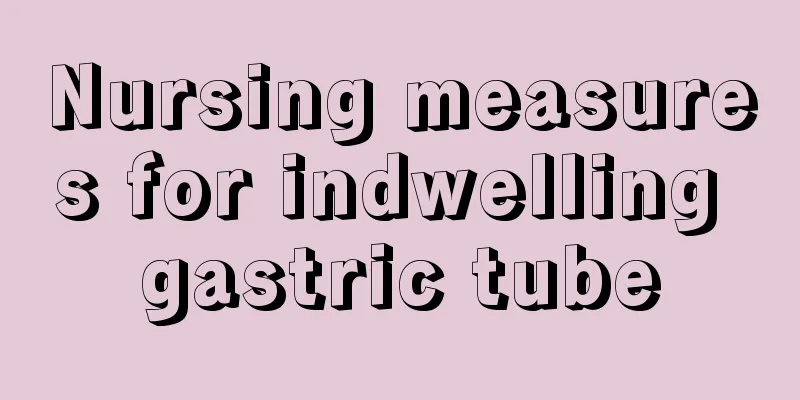What is the therapeutic effect of potassium chloride injection?

|
Potassium chloride injection is a relatively common therapeutic drug, especially in the treatment of hypokalemia. We know that once hypokalemia occurs in a person, it is very harmful to the human body. At this time, potassium chloride injection can be used for treatment, which can effectively prevent the symptoms of hypokalemia. In addition, if poisoning from drugs such as digitalis occurs, potassium chloride injection can also be used for treatment. 1. Treatment of hypokalemia Treatment of hypokalemia caused by various reasons, such as insufficient food intake, vomiting, severe diarrhea, use of potassium-excreting diuretics, hypokalemic familial periodic paralysis, hypokalemia caused by long-term use of glucocorticoids and supplementation of hypertonic glucose, etc. 2. Prevent hypokalemia To prevent hypokalemia, preventive potassium supplementation is required when the patient has potassium loss, especially if hypokalemia is harmful to the patient (such as patients using digitalis drugs), such as eating very little, severe or chronic diarrhea, long-term use of corticosteroids, potassium-losing nephropathy, Bartter syndrome, etc. 3. Digitalis poisoning Digitalis poisoning causes frequent, multifocal premature beats or tachyarrhythmias. Used for patients with severe hypokalemia or those who cannot take oral medication. The general usage is to add 10-15 ml of 10% potassium chloride injection to 500 ml of 5% glucose injection and drip (avoid direct intravenous drip and push injection). The dose, concentration and speed of potassium supplementation are determined based on the clinical condition, blood potassium concentration and improvement of the potassium deficiency pattern on the electrocardiogram. The potassium concentration should not exceed 3.4g/L (45mmol/L), the potassium supplementation rate should not exceed 0.75g/hour (10mmol/hour), and the daily potassium supplementation amount should be 3-4.5g (40-60mmol). When potassium deficiency in the body causes severe rapid ventricular ectopic arrhythmias, such as torsades de pointes, short bursts, recurrent multiline ventricular tachycardia, ventricular flutter and other life-threatening severe arrhythmias, the potassium salt concentration should be high. |
<<: What are the symptoms of hand qi? Will it itch?
>>: What are the effects and hazards of health products?
Recommend
Can people with chickenpox eat tomatoes?
Varicella is a skin disease in infants. In the pa...
How to get rid of tooth odor
Teeth are like our facade, they need constant car...
Can oxytetracycline treat gastritis?
Antibiotics are widely used in modern medicine to...
How long after cold perm can I wash my hair
There are still many things to pay attention to a...
Can eight-month-old babies eat yogurt?
When the baby is eight months old, you can add so...
This is how you should handle a positive Mycoplasma pneumoniae antibody
Pneumonia is an extremely serious disease for chi...
Rheumatoid arthritis in fingers
Rheumatoid arthritis of the fingers is a relative...
Can color Doppler ultrasound detect prostate cancer?
At present, my country has entered an aging socie...
Can babies drink yogurt?
The baby's food is milk, breast milk, formula...
Related common early symptoms of cervical cancer
At present, more than 200,000 women die of cervic...
How effective is interventional treatment for liver cancer? Common knowledge about interventional treatment for liver cancer
Interventional treatment of liver cancer is to in...
Is there any cure for melanoma
Is there any cure for melanoma? This is a questio...
How long can a person with bone cancer usually live
The survival time of bone cancer patients varies ...
The effects of vitamin B group
Vitamin B complex includes many kinds of vitamin ...
What is the reason for red blood streaks on the face when it is hot?
In real life, many people's facial skin will ...









